Senku Ishigami is the science-first protagonist of the anime and manga ‘Dr. Stone’, known for rebuilding technology from scratch after a global petrification event. Drawing on chemistry, physics, biology, and engineering, he rebuilds complex systems step by step and explains the logic as he goes. His approach emphasizes experimentation, documentation, and collaboration, turning a small village into a hub of innovation. Here are ten standout aspects of his character and achievements that show how methodical science can change a world.
Scientific Method at the Core
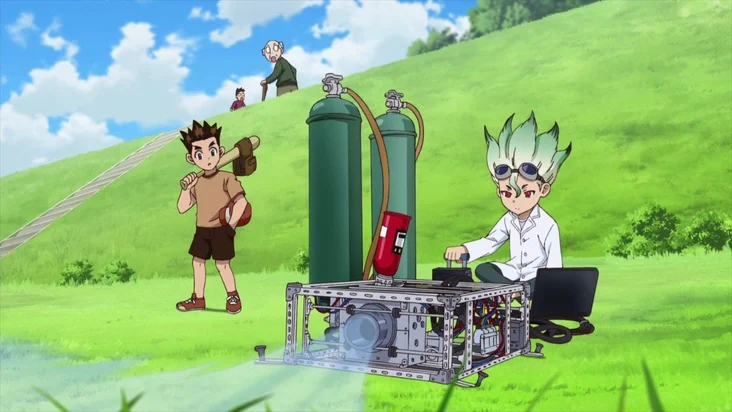 TMS Entertainment
TMS EntertainmentSenku constantly frames problems as hypotheses to test, then designs simple experiments to validate each step before scaling up. He records measurements, controls variables, and chooses processes that can be replicated with limited tools. This method lets him reduce complex goals—like generating electricity or synthesizing medicines—into manageable sub-tasks. By teaching others the steps, he turns scientific know-how into a shared community asset.
The Revival Fluid Breakthrough
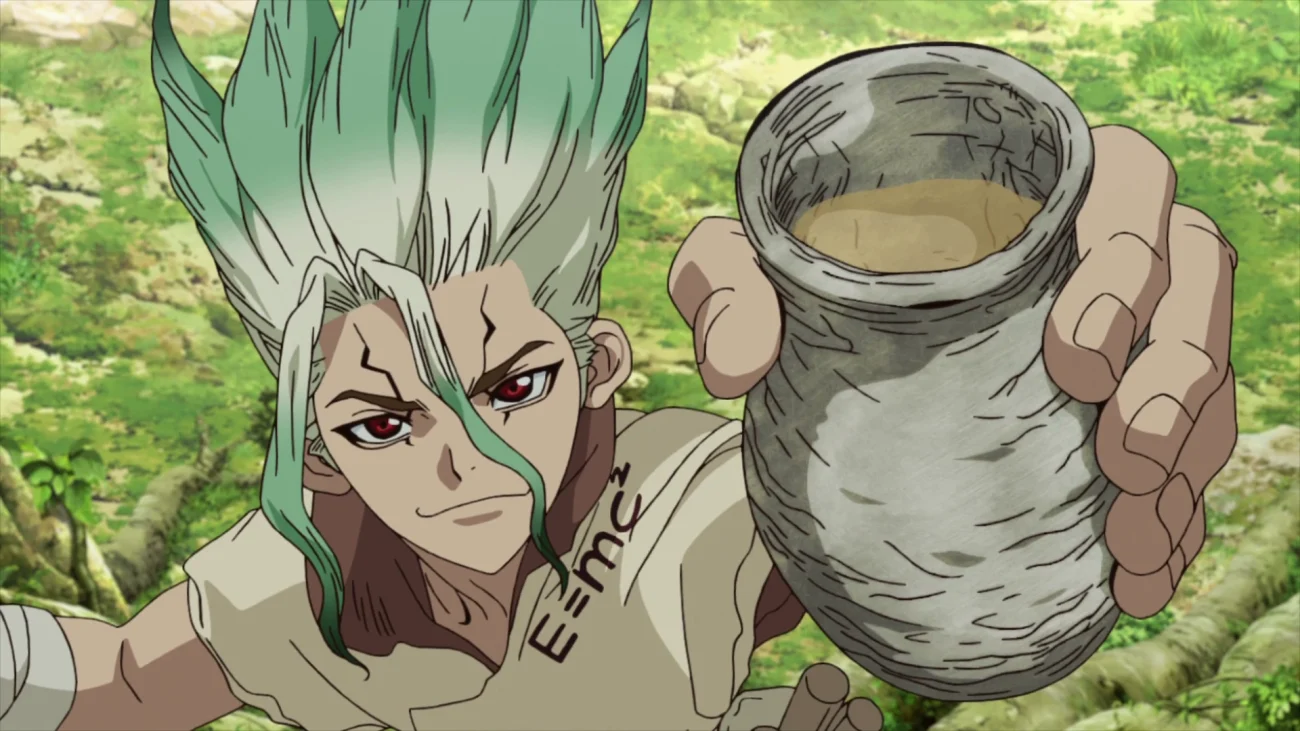 TMS Entertainment
TMS EntertainmentOne of his earliest achievements is formulating a revival fluid to reverse petrification. He identifies a nitric acid–based solution as the key active component and mixes it with alcohol to produce an effective reagent. Sourcing nitric acid from mineral-rich cave drips, he sets up a sustainable supply chain in the wilderness. This discovery allows systematic de-petrification, enabling skilled people to rejoin society.
Bootstrapping a Tech Tree from Zero
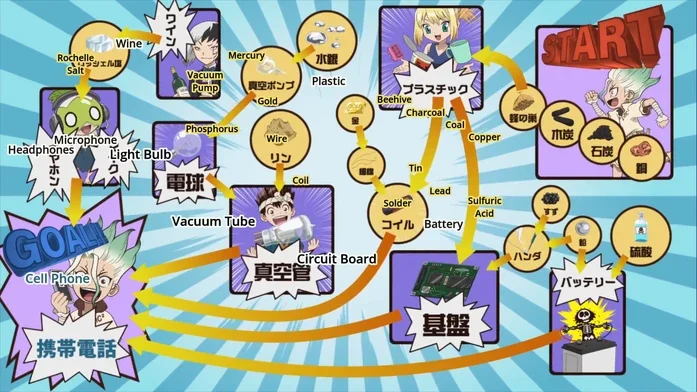 TMS Entertainment
TMS EntertainmentSenku rebuilds technology in a logical sequence, starting with soap, rope, and fire-making, then advancing to glass, paper, and metallurgy. With those foundations, he produces magnets, batteries, and filaments, paving the way to light bulbs and generators. Each invention depends on what came before, so progress is resilient and teachable. The result is a rapid climb from stone tools to early industrial capabilities.
Leadership of the Kingdom of Science
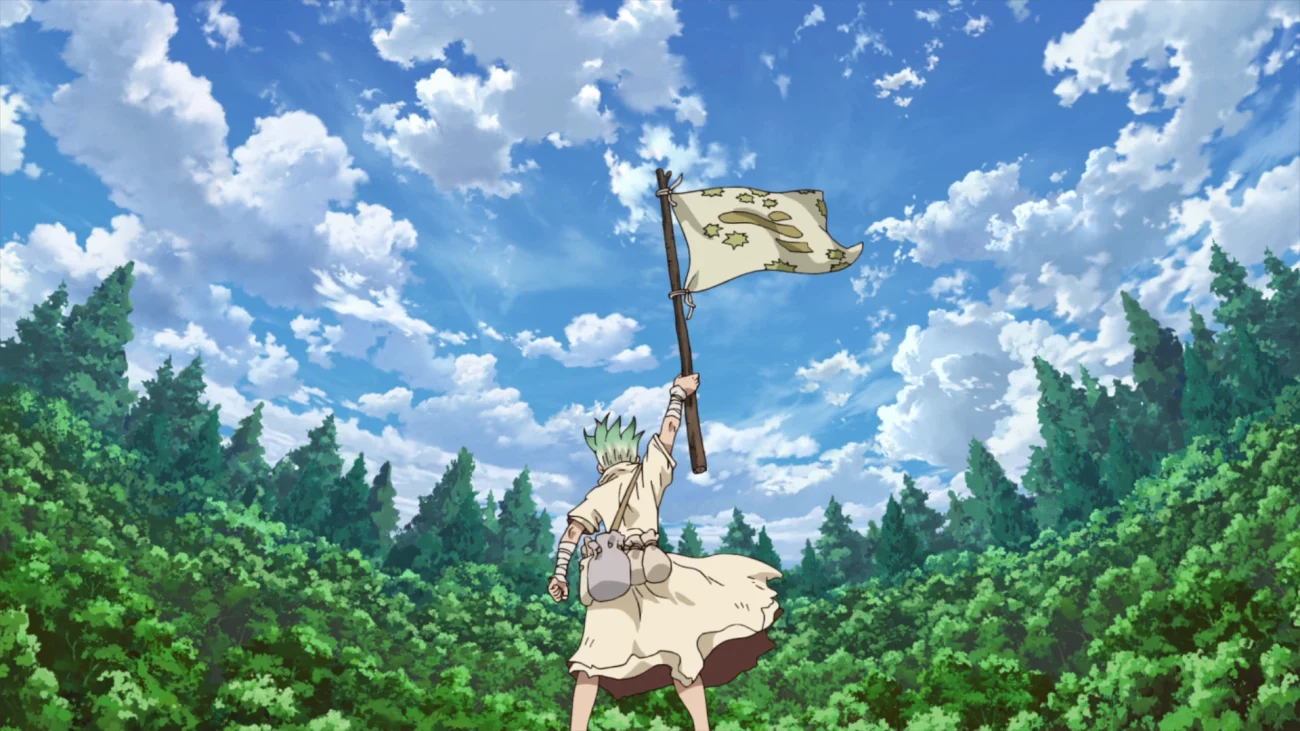 TMS Entertainment
TMS EntertainmentBeyond inventing, Senku organizes labor, trains specialists, and standardizes processes so projects keep moving. He assigns roles based on skills—craftspeople, gatherers, chemists-in-training—and sets clear production targets. He also builds feedback loops: test batches, quality checks, and tool upgrades to reduce failure rates. This structure turns scattered effort into coordinated, repeatable output.
Solving Problems with Local Resources
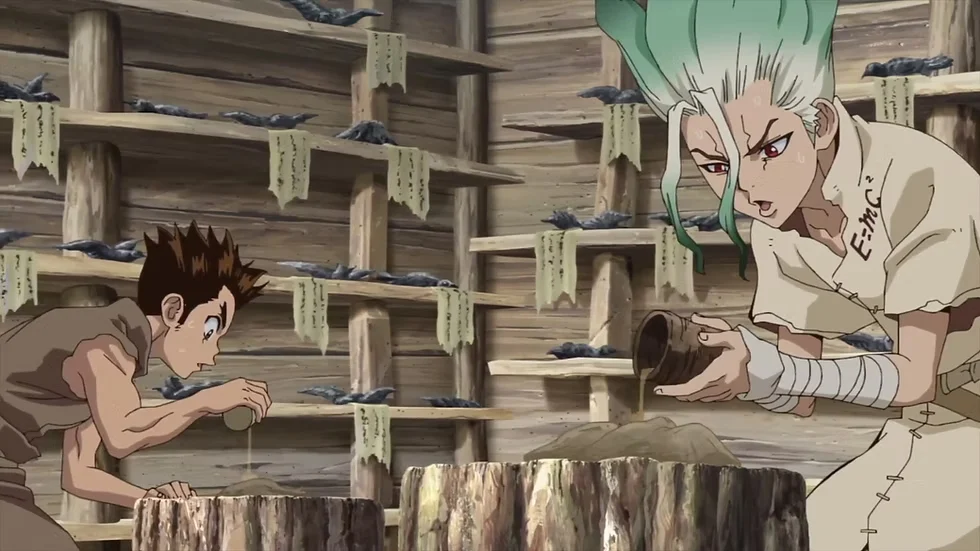 TMS Entertainment
TMS EntertainmentSenku consistently adapts designs to the materials on hand, swapping ideal components for workable substitutes. He refines ores from nearby deposits, processes plant matter for fibers and acids, and repurposes pottery and charcoal for high-temperature applications. When precision parts are needed, he devises jigs and molds to improve consistency. This frugal engineering keeps progress steady even without modern supply chains.
Long-Distance Communication from Scratch
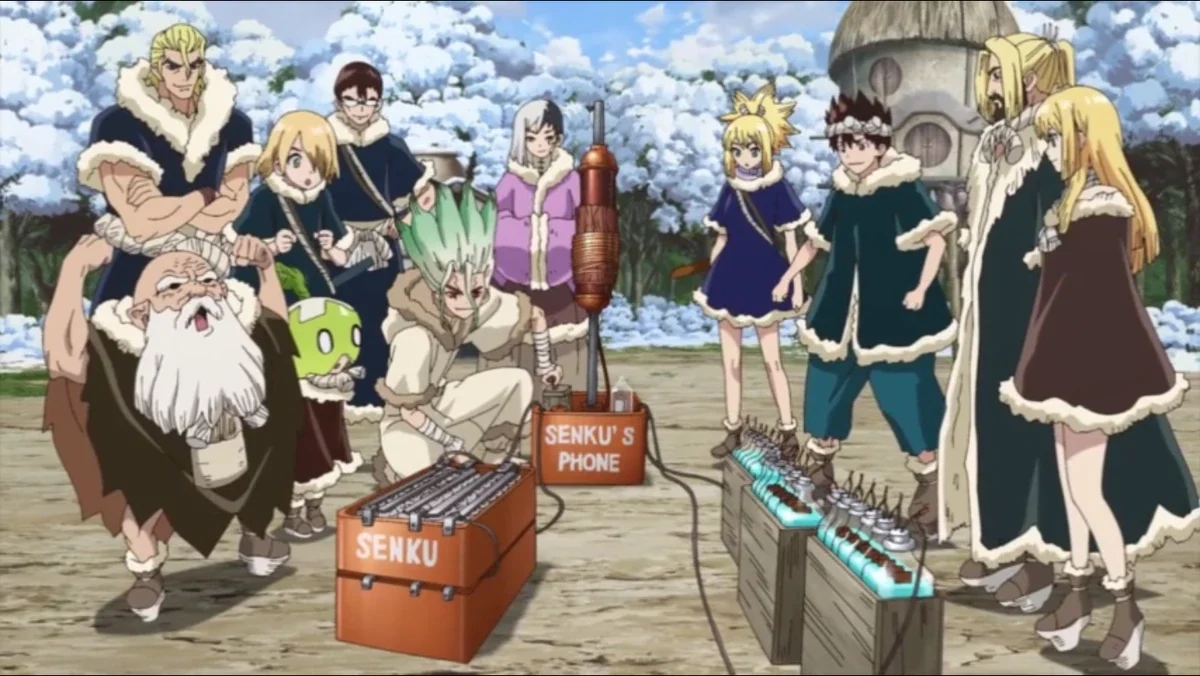 TMS Entertainment
TMS EntertainmentHe constructs an electrical telephone system using hand-wound coils, capacitors, and vacuum tubes housed in carefully blown glass. To power and stabilize the line, he pairs batteries with a generator and improves signal quality through better magnet cores and wiring. With repeaters and careful line routing, the system bridges long distances between settlements. Reliable communication dramatically improves coordination, safety, and trade.
Re-Creating Antibiotics and Essential Medicines
 TMS Entertainment
TMS EntertainmentSenku synthesizes a sulfonamide antibiotic through a multi-stage route that includes producing acids, refining reagents, and controlling reaction conditions. He also makes analgesics and antipyretics to manage pain and fever, prioritizing safe dosages and purity checks. By setting up sterile procedures and simple assays, he reduces contamination risks. These medical advances directly save lives and enable more demanding expeditions.
Materials Science: Glass, Ceramics, and Metal
 TMS Entertainment
TMS EntertainmentHe revives glassmaking with controlled furnaces, tube drawing, and annealing to produce labware and bulbs. In ceramics, he formulates clays and glazes that withstand heat and chemical exposure, supporting crucibles and reaction vessels. For metals, he smelts iron sand, manages carbon content for steel, and introduces forging and quenching cycles. These capabilities unlock precision tools and durable machine parts.
Generating and Managing Power
 TMS Entertainment
TMS EntertainmentSenku builds galvanic cells from copper and zinc with electrolyte solutions to supply early, steady current. He then scales to mechanical generation with a waterwheel and later integrates a steam engine for higher output. Voltage regulation, insulated wiring, and safer switching make the system usable for lighting and communications. Stable power transforms workshops from manual to electro-mechanical operations.
A Roadmap to Space
 TMS Entertainment
TMS EntertainmentLong-term, he lays out a plan for rocketry, from propellant chemistry and engine design to guidance and materials. He prototypes measurement tools, mapping, and radio navigation to track trajectories and locations. Stepwise milestones—pressure-resistant vessels, fuel control, and thermal protection—turn an impossible goal into defined engineering tasks. The roadmap ties daily experiments to a clear strategic objective.
Share your favorite Senku moment or invention from ‘Dr. Stone’ in the comments!

.jpeg)



































 English (US) ·
English (US) ·